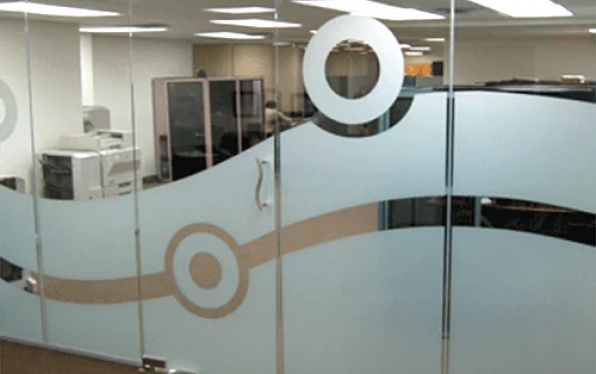Welcome to Hansen Glass!
Welcome to Hansen Glass, your trusted family-owned business for all your window and glass service needs. With over 37 years of dedicated service, Hansen Glass stands as a hallmark of reliability and craftsmanship in the industry.
How it Works?


Get an Estimate Over the Phone
Call and frequently receive a quote for your work over the phone

Schedule a Consultation
Book a session with our glass experts.

Get a Custom Plan
Receive a personalized glass solution

Enjoy Your New Space
Experience the elegance of expertly installed glasswork

Celebrate 40 Years of Duette® Honeycomb Shades
Hunter Douglas is celebrating the 40th anniversary of their iconic Duette® Honeycomb Shades with a limited-time offer! From September 4–29, enjoy 25% off when you pair any Duette Honeycomb Shades with Powerview® Gen 3 Motorization. Orders must be paid and submitted by September 29, and this promotion cannot be combined with other offers.
It’s the perfect time to upgrade with energy efficiency, smart convenience, and even greater savings – plus, you may still qualify for the Federal Tax Credit of up to $1,200 on select energy-efficient shades

Benefits
Energy Savings
Reduce energy costs with efficient glass services.
Noise Reduction
Enjoy a quieter home with enhanced sound insulation.
Sustainable Practices
ECO-friendly Glass solution
24/7 Support
Round-the-clock assistance for all your glass needs
Cost-Effective Solution
Affordable services without compromising quality
Customizable Solution
Tailored glass plans to meet your specific needs
Industry Expertise
Expert solutions from industry-leading professionals
Reliability
Trustworthy, on-time service for consistent results
Family-Owned Business
Proudly serving the community for 37 years
Our Clients' Experiences
Cliff and Pam Simms
Anne Barrington
Their knowledge and dedication to customer service were top-notch. They made sure I had all the information I needed and even gave me some great tips for installation. Thanks to Tom and Lee, I left the store feeling confident and happy with my purchase.
I highly recommend Hansen Glass for anyone needing glass-related products or assistance. Tom and Lee will take great care of you and make sure you get exactly what you need!

2025 Best of the Best Awards
- Parker - Best Windows and Home Remodeling
- Castle Pines - Best Home Remodeling
- Englewood - Best Windows and Home Remodeling
- Elbert County - Best Windows
- Littleton - Best Windows and Home Remodeling
- Lone Tree - Best Windows, Home Remodeling, and Kitchen & Bath Remodeling
- Highlands Ranch - Best Windows, Home Remodeling, and Kitchen & Bath Remodeling
- Centennial - Best Windows, Home Remodeling, and Kitchen & Bath Remodeling
Thank you to all our clients for making these honors possible! We’re proud to serve our community and continue offering exceptional home improvement services.
Neighbors Name Hansen Glass a “2024 Nextdoor Neighborhood Faves”
Being named a Neighborhood Fave is a meaningful recognition from our community. We’re honored to be part of this incredible community and grateful for the support of our neighbors.


Special Discounts
We value our community heroes. That's why we offer special discounts for seniors and military/first responders. It's our way of saying thank you for their service and dedication.
About Us
Hansen Glass has been proudly serving our customers for over three decades. As a family-owned business, we prioritize quality, affordability, and customer satisfaction in everything we do. Our commitment to excellence is evident in our long-standing
relationships with homeowners and businesses throughout the community.
Our Commitment to Quality
At Hansen Glass, we understand the importance of reliable glass service and superior craftsmanship. We are dedicated to providing the highest quality products and services to our customers, ensuring their homes and businesses are equipped with durable, efficient, and visually appealing glass solutions.
Our Promise
Exceptional Customer Service:
We prioritize clear communication, timely responses, and a friendly approach to ensure your experience with us is seamless and enjoyable.
Expert Craftsmanship:
Our skilled technicians undergo rigorous training to deliver precision and quality in every project, from standard glass replacements to intricate custom designs.
Sustainable Practices:
We are dedicated to reducing our environmental impact. We use eco-friendly materials whenever possible and ensure responsible disposal and recycling of old glass and materials.
Comprehensive Warranty
Your satisfaction and peace of mind are our priority. That's why we provide a comprehensive warranty on all our products. You'll receive a 1-year warranty on service and installation, along with a generous 10-year warranty on materials for windows, window glass, and shower enclosures.
Fully Insured for Your Protection
Rest assured, Hansen Glass is fully insured. We take every precaution to protect your home or business during our services, providing you with added peace of mind.
"Transparency You Can Trust: We Only Do What's Needed"
At Hansen Glass, we pride ourselves on our integrity and professionalism. We only perform necessary repairs, ensuring that you receive the precise fixes needed without any unnecessary additions or modifications.
Services we Offer to our Commercial and Residential Customers
From window glass replacement, whether double pane, triple pane, or single pane, to repairing window and door screens, Hansen Glass is your go-to expert. We specialize in delivering prompt, professional service with a focus on quality craftsmanship.

Shower/Tub Enclosures
We offer fully-framed, semi-frameless, and European enclosures, combining elegance and functionality. Transform your bathroom into a luxurious space with our designs. Call us to learn how we can make your bathroom a showplace with our European designs and personalized solutions.

Assessing Your Windows
Our experienced technicians provide thorough assessments of your windows. We will advise you on whether a complete window replacement is necessary or if simply replacing the glass will suffice. This careful evaluation often saves our customers substantial costs, typically ranging from $40,000 to $80,000.

Custom Projects
At Hansen Glass, we love a challenge. During the COVID-19 pandemic, we designed and produced custom booth dividers for West Main Taproom + Grill, helping them safely accommodate more customers. We thrive on creating innovative solutions tailored to your unique needs.

Seasonal Specials
Stay tuned for our seasonal specials, designed to provide you with exceptional value throughout the year. Whether you’re gearing up for spring cleaning or preparing for winter, Hansen Glass has a special offer to meet your needs. From exclusive discounts to limited-time promotions, our seasonal deals ensure you receive high-quality glass products and services at unbeatable prices. Take advantage of these offers to enhance your home or business with our expertly crafted glass solutions. Don’t miss out on these valuable opportunities to save and improve your space with Hansen Glass.

Specialty in Older Custom Wood Windows
At Hansen Glass, we appreciate the charm and value of your custom wood windows. By recommending glass replacement rather than full window replacement, you could save between $40,000 and $80,000, preserving both the integrity and the financial value of your home. Our skilled technicians specialize in safely removing old glass and installing new, high-quality panes, ensuring that your existing frames remain intact. Trust us to maintain your home’s unique character while enhancing its durability and saving you money.

Blinds & Window Treatments
At Hansen Glass, by partnering with Hunter Douglas, we offer premium blinds and window treatments that enhance your home’s aesthetic without the need for costly renovations. Choosing our custom solutions over generic alternatives can save you thousands while elevating your home’s style and comfort. Our expert team specializes in designing and installing Hunter Douglas products, ensuring seamless integration with your existing decor. Trust us to preserve your home’s unique charm while delivering innovative, high-quality window treatments that stand the test of time.
Contact Us
Contact Hansen Glass today to schedule your consultation. Discover why we're the trusted name in window and glass services. Experience the Hansen Glass difference, where craftsmanship meets commitment.






